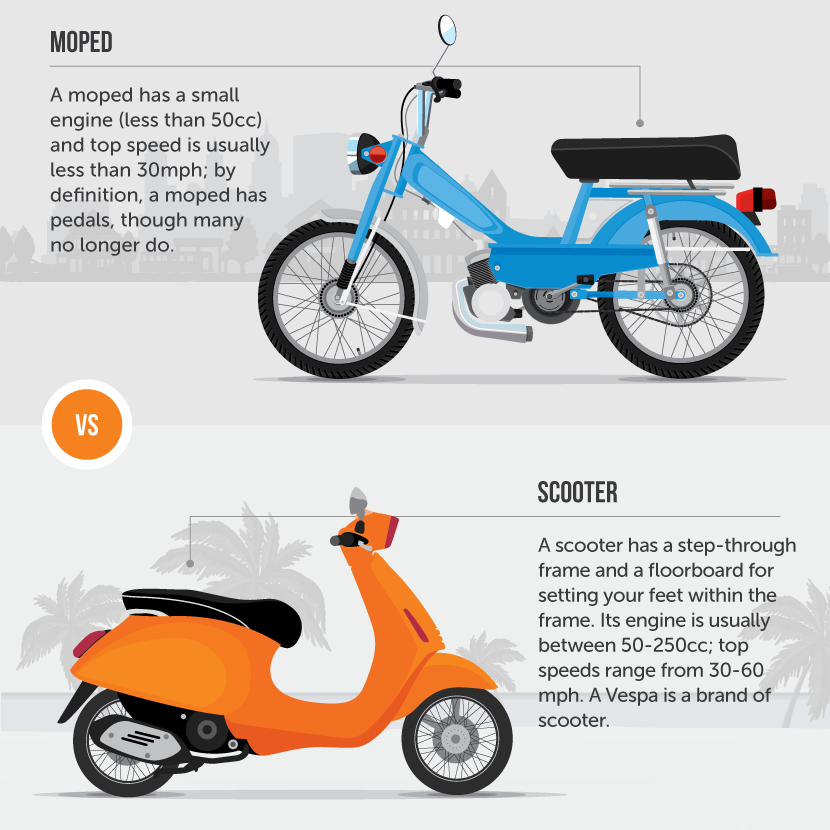Unveiling the Technical Nuances: Mopeds vs. Scooters
The article explores the technical differences between mopeds and scooters, focusing on the integration of the engine, transmission, and rear wheel as a single unit. It discusses the concept of unit transmission and how it distinguishes scooters from traditional mopeds. The handling dynamics and suspension of each type of vehicle are also compared, highlighting the advantages of mopeds in terms of handling capabilities. The article concludes by emphasizing the versatility of mopeds in terms of design and engine capacity.
SCOOTERS MOPEDSMOPED CULTURE
12/7/20232 min read


Unveiling the Technical Nuances: Mopeds vs. Scooters
Introduction: In the world of two-wheeled motor vehicles, the distinctions between a moped and a scooter may seem subtle to the untrained eye. However, delving into the technical intricacies reveals a fundamental divide that has evolved over decades. While these terms are often used interchangeably, a comprehensive analysis exposes a crucial factor that sets them apart – the integration of the engine, transmission, and rear wheel as a single unit. This concept, dating back to the 1950s and referred to as a unit transmission, forms the basis of our exploration into the fascinating realm of mopeds and scooters.
The Unit Transmission Paradigm: At the core of the distinction lies the concept of unit transmission. A scooter, irrespective of its physical appearance, is characterized by the engine, transmission, and rear wheel moving as one cohesive unit. This integration is a hallmark of scooters, defining their handling characteristics and overall design. In contrast, a traditional moped, features a separate rear wheel drive. The engine is mounted within the frame, suspended independently of the rear wheel and its associated transmission.
Handling Dynamics: The crux of the matter lies in the handling dynamics engendered by the unit transmission paradigm. Scooters, with their engine doubling as the suspension, face challenges in handling that their motorcycle counterparts circumvent. A classic motorcycle, distinguishing itself by having the rear wheel driven independently from the engine, allows for a superior handling experience, especially in scenarios demanding precision and control.
Unsprung Weight and Suspension: A critical consideration in the comparison is the concept of unsprung weight. In scooters, the engine contributes significantly to the unsprung weight, as it is directly connected to the rear wheel. This adversely affects handling, especially when traversing uneven terrain. On the contrary, mopeds, with their engines frame-mounted and rear wheels suspended on swingarms and shocks, effectively isolate the frame, engine, and rider from road imperfections. This design minimizes unsprung weight, resulting in enhanced handling capabilities.
Moped Versatility: Mopeds, often associated with smaller engine capacities like 50cc, are not confined to a specific design or form. What defines them, in a technical sense, is the separation of engine and rear wheel movement. This opens the door to a diverse range of moped designs, including those with frame-mounted engines and swing-arm suspensions.
Conclusion: In the nuanced world of two-wheeled motor vehicles, the technical distinction between mopeds and scooters goes beyond mere nomenclature. The unit transmission paradigm, deeply rooted in the history of these vehicles, influences their handling dynamics and design philosophies. While scooters embrace the unity of engine, transmission, and rear wheel, mopeds adhere to a traditional separation, offering a diverse range of designs. Understanding these technical nuances provides enthusiasts with a more profound appreciation for the engineering choices that shape the riding experience on these distinct, yet often misunderstood, two-wheeled companions.
